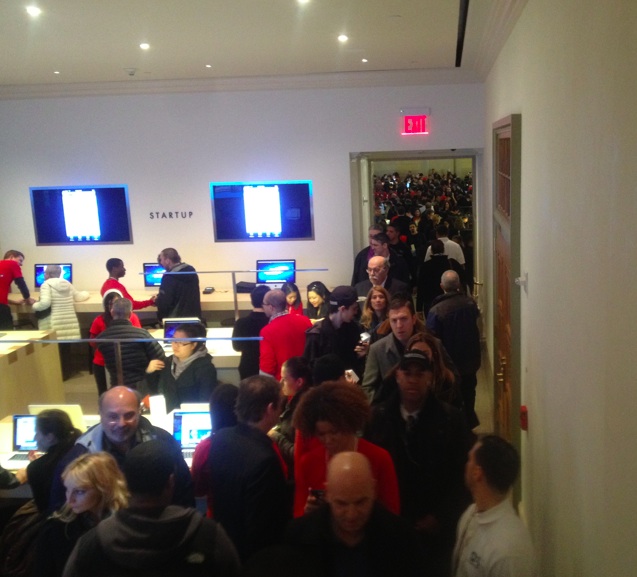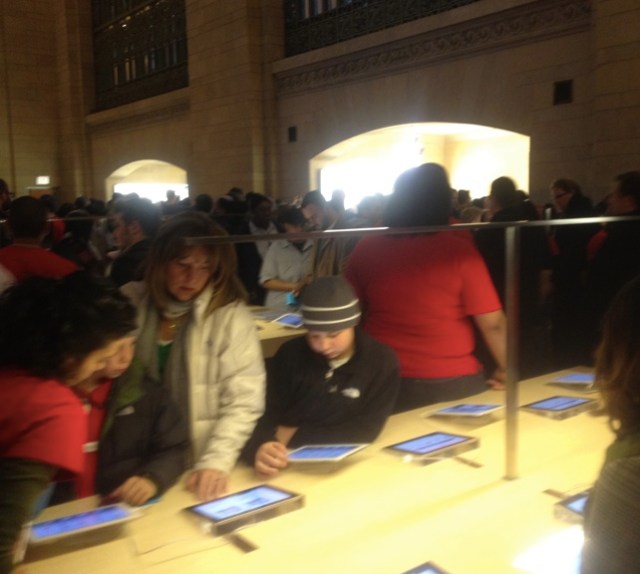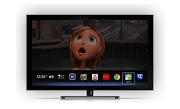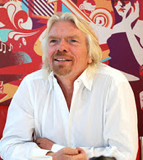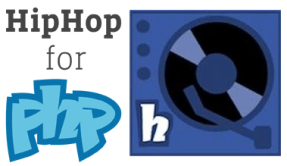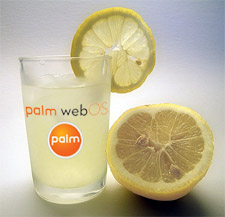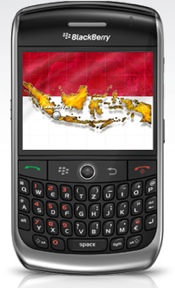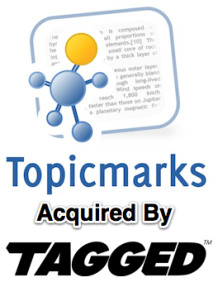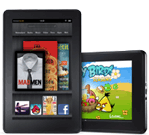The global slapfight between Apple and Samsung shows no sign of abating – a victory here, an injunction there, a ruling here, a reversal there – like Aesop’s goats, neither will give way and chances are they’re both going to end up the worse for it, though not likely at the bottom of a ravine.
It doesn’t mean that the conflict doesn’t furnish some interesting topics for discussion, however. Just recently, Apple submitted written testimony by an expert who shares their perspective on Samsung’s design decisions, and very kindly helped to compile a list of things Samsung might have done to differentiate its product. For example, Samsung could have opted not to make their tablet rectangular, or done away with the front bezel, or given it a “cluttered appearance.” Excellent suggestions!
Not surprisingly, there has been some discussion of Apple’s rather ridiculous list of design elements it claims as its own. It’s a good time to examine the creative decisions around the iPad from a different direction. It seems to me that Apple laid a trap for the entire consumer electronics industry, and they fell for it hard. And it’s really a triumph of positioning and branding. They essentially branded the tablet’s Platonic form.
What set me thinking about this was this article about creating a tablet “from scratch.” It’s good, but unfortunately doesn’t achieve the end its author intended, which is to rebut Apple’s accusations. The article certainly shows that, working from first principles like the limits of vision and grip and so on, and make only the absolutely necessary additions given the limitations of technology at the moment, you end up with something that’s a lot like an iPad. The author suggests that this exonerates Samsung. But alas, it does the opposite: it merely glorifies Apple. No, it’s not fair. But it is true. Why? It’s interesting to think about objects that can actually be reduced to ideal forms. It’s difficult for a chair, for instance. Does the ideal chair have armrests or not? Does it have a square back or a rounded one? Flat, sculpted, or cushioned seat? You simply can’t settle it. Yet if this Platonic chair existed, and someone made it, they would be able to point at every other chair in the world and say “look how they’ve ripped me off.”
Yet that’s what Apple has done with the iPad. I certainly don’t mean that the iPad is the be-all and end-all of tablets — there’s a difference between ideal in concept and ideal in practice. The first means it conforms to a fundamental concept of the object, the second means it’s the best it can possibly be. The iPad is ideal in the first sense: it’s no more advanced in its design than a ball or a cube. It’s a type, not a design. Which is not to say that is isn’t well-done or that they didn’t put a huge amount of work into it.
A true ideal tablet would be nothing but a magic window into content. Apple made a device as close as possible to this magic window and paired it, somewhat hurriedly and crudely, with a powerful and popular platform they already controlled. Its initial success owes itself largely to the momentum of the iPhone. But once they put it out there and sold more than a dozen of them, their triumph was complete.
See, by making the design completely generic, and don’t kid yourself, that’s what they intended and got, they ensured that no one could look at another tablet without thinking of theirs. You can look at a Asus Transformer without thinking of a Xoom, or a Nook without thinking of a Galaxy Tab, but you can’t look at any of those without thinking of the iPad. But not just because they’ve sold more units. Because you can’t make a Xoom without making an iPad first, just like you can’t make a die without making a cube first. This was Apple’s stroke of evil genius.
I say evil because while it’s admirable, among the highest art in fact, to create objects as close to their type as possible, it’s another thing to claim parentage over everything further out from the source.
Consider the Bic.
Now, I don’t mean to say that this pen is exactly analogous the iPad or Apple’s position. But consider it for a second anyway. This little device is the pen defined – essentially it’s the bare minimum for a pen, designed well and simply for human hands to grip and write with. It has no extraneous elements yet is still functional and easily recognizable as an individual branded object. It’s durable, cheap, and reliable – qualities which emerge from its archetypical design.
And while it does fit so closely with our ideas of what a pen should be (roughly cylindrical, of a certain length and width, with a writing tip and perhaps a cap that fits on and doubles as a clip), no would say it’s the best or only pen in the world, or that other pens, which share 90% of the Bic’s most important characteristics, are copies or descendants.
This Bic pen enjoys widespread popularity and huge sales, has for ages. It sells because it’s a type.
The iPad sells for more complicated reasons, but its form is about as original as the Bic’s. Functional, yes; beautiful, yes; but original? How can something so clearly designed to be the opposite of original be considered so? The iPad was made a dozen times before it was made, just like the Bic. It will enjoy long-lasting popularity and be an iconic product for a long time, like the Bic. And like the Bic, it has no claim to its shape. Its shape, like the pen, the chair, the cup, was determined by necessity, and Apple made sure that apart from a few very small features, its shape was determined solely by necessity. That’s not an easy thing to do, and the result (like all good design) speaks for itself. Apple is reaping the rewards, but they must acknowledge that they don’t own the shape which larger forces than themselves imprinted on their work.
 Apple’s allegations regarding UI poaching are more realistic. For a touch-based interface, we don’t yet have a type, a Platonic form, as evidenced by all the experimentation and evolution we see every month in apps, OSes, concepts, and so on. Imitation is obvious when the slate (so to speak) is so substantially blank.
Apple’s allegations regarding UI poaching are more realistic. For a touch-based interface, we don’t yet have a type, a Platonic form, as evidenced by all the experimentation and evolution we see every month in apps, OSes, concepts, and so on. Imitation is obvious when the slate (so to speak) is so substantially blank.And I am not oblivious that there are certain little design flourishes that set the iPad apart from a totally undesigned device. These were intentionally kept subtle and few in number. It’s these that other companies should feel ashamed of being caught copying.
What can companies like Samsung and HTC do when every tablet they build has the same foundation as Apple’s? They can make real design decisions. If they inherit the design (with minor alterations) from a competitor, and someone else makes the OS, what exactly are they contributing? The placement of the power button? That’s not to say they can’t make a perfectly nice tablet, but if they want to be held apart as a truly different device, they need to take a risk. Apple was first on the field and very pointedly took no risks in design — the risk they took was in offering the device at all. Why not take Apple up on its suggestions? No bezel, not thin, non-rectangular shape? Accept the challenge and make Apple eat their words. It’s what they would probably do if the situations were reversed. It’s all impossible until someone does it.
It’s a period of imitation whether you’re ally or enemy to Apple, because they built the mother of all tablets, or as close as they could manage, and everyone else’s devices look like its children whether they are or not. It will take time for the family tree to grow and differentiate. Apple is in the enviable position of being able to claim they invented the wheel (and patented it), and will take everyone to task for their circles until someone makes something truly new.

